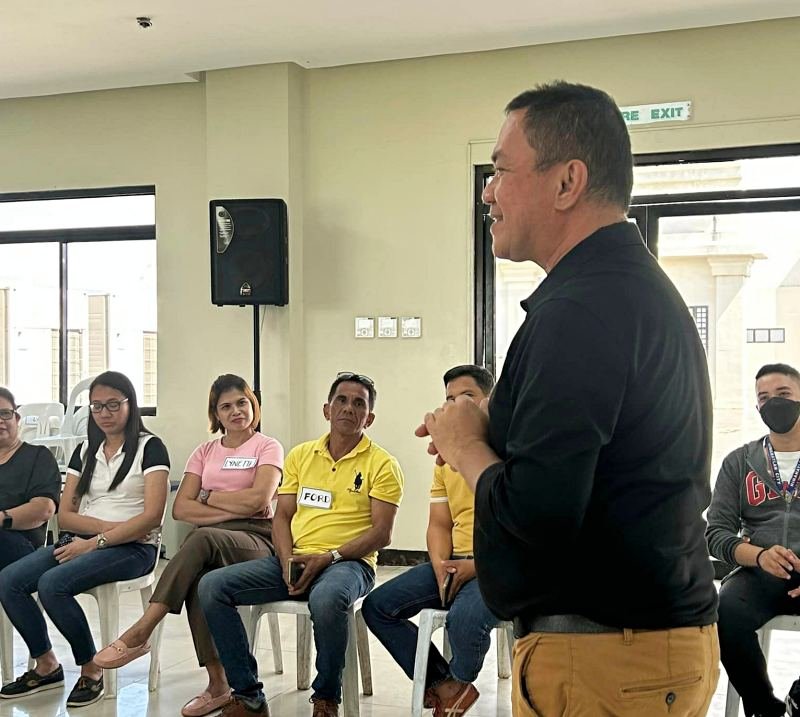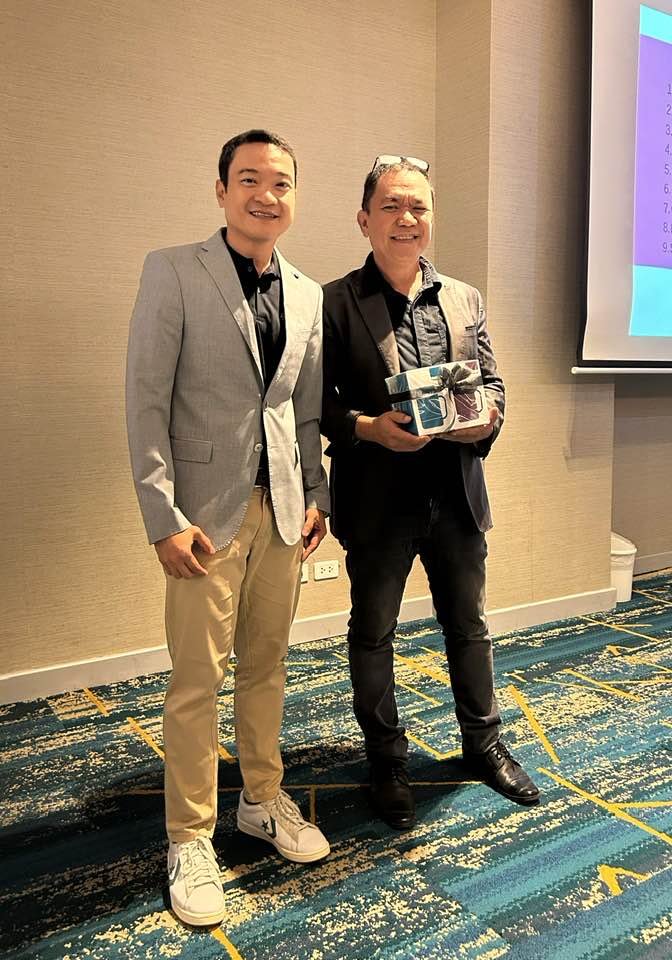
Adult Learning Principles
Table of Contents
Adult Learning Principles: A Trainer’s Personal Experience
Being a professional trainer, I embark on a journey every time I step into a room full of eager learners. It’s a journey guided by the principles of adult learning, a roadmap that shapes my strategies and methodologies. In this narrative, I’ll walk you through my experiences, weaving in the key principles that illuminate the path of effective adult education.

Understanding the Principles of Adult Learning
Self-Concept:
My experiences have taught me that adults often come to the learning table with a wealth of knowledge and experiences. Each individual carries a unique self-concept, shaped by years of personal and professional growth. Recognizing and valuing their individuality creates an environment where they feel respected and motivated to engage. I strive to acknowledge the diversity in the room and foster an atmosphere where every voice is heard and valued.
Experience:
One vivid memory that stands out is a training session I conducted on leadership skills. Instead of bombarding participants with theories, I started by asking them to share their experiences in leadership roles. The room came alive with stories of challenges, successes, and lessons learned. This approach created an immediate connection between the content and their existing knowledge base. It reinforced the idea that learning is not just about acquiring new information, but also about building on what they already know.

Adult Learning Principles
Readiness to Learn:
Through the years, I’ve noticed that readiness to learn varies among adults. Some are motivated by an immediate need, while others seek knowledge for personal growth. Understanding these motivations helps me tailor content to meet diverse needs. For instance, in a recent workshop on digital marketing, I ensured that the material catered to both beginners looking to launch their online presence and seasoned marketers aiming to refine their strategies.
Orientation to Learning:
I vividly remember a workshop where participants were skeptical about the relevance of the content. They wanted to know why they were learning something and how it would impact their daily lives. This experience taught me the importance of setting clear objectives upfront. By clarifying the purpose and expected outcomes, I was able to establish a clear path for their learning journey. This ensured that every moment spent in the training room was purposeful and meaningful.

Adult Learning Principles
Motivation:
Motivation is the engine that drives adult learning. It’s like fuel in a car – without it, progress is sluggish. I’ve learned that understanding what motivates my learners is key. Some are motivated by career advancement, while others seek personal fulfillment. During a workshop on time management, I tailored examples and exercises to resonate with the specific motivations of each participant. This personalized approach not only captured their interest but also kept them engaged throughout the session.
Need to Know:
Adults are practical learners. They want to know how the information they’re acquiring will benefit them in real-life situations. In a workshop on effective communication, I ensured to provide concrete examples and scenarios that mirrored their workplace challenges. This approach not only answered the “why” but also demonstrated the direct application of the concepts, making the learning experience immediately relevant.

Adult Learning Principles
Orientation to Learning:
Reflecting on my experiences, I’ve come to appreciate that adults prefer learning materials that are problem-centered rather than content-centered. This insight has reshaped how I design my training materials. Rather than bombarding them with information, I focus on presenting real-world scenarios and case studies. This approach encourages active problem-solving, which, in turn, leads to deeper understanding and retention.
Self-Directed Learning:
One remarkable journey was with a group of entrepreneurs eager to delve into digital marketing. They craved autonomy in their learning process. I provided them with a curated list of online resources, encouraged self-paced exploration, and facilitated group discussions to share insights. This experience reinforced my belief in the power of self-directed learning. It empowers adults to take ownership of their learning journey and fosters a sense of independence and confidence.
In conclusion, in my role as a professional trainer, these principles of adult learning have not only guided my approach but have also enriched the learning experiences of my participants. It’s a continuous learning process, as I adapt and refine my methods based on the diverse needs and preferences of my audience. Understanding and respecting these principles has not only made me a more effective trainer but has also created a space where adult learners thrive and flourish. This journey is a testament to the transformative power of adult education, and I look forward to every opportunity to embark on it anew.
Contact us: https://www.facebook.com/JOJOVITOTrainings

Adult Learning Principles
More Stories
- KAKANIN | NATIVE DELICACIES IN THE PHILIPPINES
- THINGS TO DO IN TOKYO | TOURIST SPOTS
- BEST OF THE BESTS: Top Colorful Festivals in the Philippines
- THINGS TO DO IN BORACAY, PHILIPPINES
- HONGKONG TOURIST SPOTS
- MACAU TOURIST SPOTS | 20 Attractions You Shouldn’t Miss
- CONSTIPATION TREATMENT | Natural Remedies
- CAMOTES ISLAND TOURIST SPOTS
- DISCOVERING TOP ASIAN SPICES AND HERBS
- THINGS TO DO IN EL NIDO, PALAWAN | TOURIST SPOTS
- Token of Gratitude and Citation | LCC Alumni Association, Inc.
- Merzci East: My Delightful Discovery of the Newest Branch in Bacolod
- Northill Parade: Bacolod’s Newest Retail Destination
- Customer Relations in the Digital Age | DTI Negros Occidental












1. How can MBA-HRM students integrate adult learning principles into talent development strategies to ensure that employees are equipped with the necessary skills and knowledge for career advancement within the organization?
Integrating Adult Learning Principles into Talent Development: In today’s dynamic business environment, MBA-HRM students can integrate adult learning principles into
talent development strategies by considering the following:
A. Self-directed Learning: Encourage employees to take ownership of their learning and development. Provide resources, mentorship, and opportunities for self-assessment.
B. Relevance and Practicality: Ensure that training programs are relevant to employees’ roles and career goals. Adult learners are more motivated when they see the direct applicability of the skills they are acquiring.
C. Experience-Based Learning: Incorporate experiential learning opportunities, such as on-the-job training, simulations, and case studies, to engage employees actively.
D. Feedback and Reflection: Implement regular feedback mechanisms, peer evaluations, and reflective exercises to help employees identify areas for improvement and set goals.
2. As an MBA-HRM student specializing in organizational development, discuss how you would apply the principles of adult learning to design a change management training program that effectively addresses employee resistance and facilitates a smooth transition during a major organizational restructuring.
To design a change management training program that addresses employee resistance and facilitates a smooth transition during a major organizational restructuring, an MBA-HRM student should:
A. Communicate the “Why”: Explain the reasons for the change clearly, emphasizing how it benefits both the organization and the individual.
B. Active Participation: Involve employees in the change process through brainstorming sessions, focus groups, or cross-functional teams.
C. Tailored Training: Customize training content to address specific concerns and resistance points.
D. Mentoring and Coaching: Provide ongoing support and coaching to help employees adapt to the changes.
3. Reflecting on the “Self-Concept” principle, analyze how an MBA-HRM student, tasked with implementing a performance appraisal system, can incorporate self-assessment tools and feedback mechanisms to empower employees in taking ownership of their professional growth and development
Incorporating Self-Concept in Performance Appraisal: MBA-HRM students tasked with implementing a performance appraisal system can incorporate self-assessment tools and feedback mechanisms by:
A. Self-Appraisal: Encourage employees to self-assess their performance and set goals.
B. 360-Degree Feedback: Gather input from peers, supervisors, and subordinates to provide a comprehensive view of an employee’s performance.
C. Development Plans: Collaboratively create development plans based on self-assessment and feedback to empower employees to take ownership of their growth.
4. Consider a scenario where an MBA-HRM student is tasked with crafting a diversity and inclusion training program for a multinational corporation. How would you utilize the “Experience” principle to create experiential learning opportunities that foster a culture of inclusivity and respect among employees from diverse backgrounds?
To utilize the “Experience” principle in fostering a culture of inclusivity, MBA-HRM students can:
Experiential Workshops: Organize workshops and simulations that expose employees to different perspectives and experiences.
A. Diversity Councils: Establish employee-led diversity and inclusion councils to drive initiatives and create a sense of ownership.
B. Storytelling and Sharing: Encourage employees from diverse backgrounds to share their experiences and insights.
5. Drawing from your understanding of the “Readiness to Learn” principle, discuss how an MBA-HRM student specializing in leadership development can tailor training initiatives to meet the varying levels of readiness among managers at different stages of their careers, ensuring that the content is both relevant and impactful.
When tailoring training initiatives for managers at different stages of their careers, consider the “Readiness to Learn” principle by:
A. Assessment: Assess managers’ current skills, knowledge, and readiness for leadership development.
B. Customized Learning Paths: Create personalized learning paths based on assessment results.
C. Mentoring and Coaching: Provide mentors or coaches to support managers as they progress in their careers.
By integrating these principles into talent development strategies, MBA-HRM students can enhance the effectiveness of their programs and better meet the unique learning needs of adult learners in the organization.
Best Regards,
MARIA LORENA L. APPIAH-KUBI
MBA-HRM, LCC-BACOLOD
In today’s dynamic business environment, how can MBA-HRM students integrate adult learning principles into talent development strategies to ensure that employees are equipped with the necessary skills and knowledge for career advancement within the organization?
The adult learning principles include self-direction, transformation, experience, mentorship, mental orientation, motivation, and readiness to learn. Adult learning theories can positively impact adult learning experiences both in the classroom and on the job. The learning should come through doing, rather than memorization or repetition. An organization can effectively use andragogy in its training program by setting out common problems that the learner will encounter in their new role, then assisting the learner in developing solutions to those problems. Talent development programs provide a host of benefits. They enhance employee performance, boost employee productivity, reduce employee turnover, and improve company culture. Explore the importance of training and development programs for employees and employers by pursuing a career in human resources.
As an MBA-HRM student specializing in organizational development, discuss how you would apply the principles of adult learning to design a change management training program that effectively addresses employee resistance and facilitates a smooth transition during a major organizational restructuring.
A management training program is a professional course that organizations offer employees who want to develop the skills they need to be an effective leader. Management training programs are designed to be industry-specific as well as organization-specific, tailored to reflect the business’ unique needs. Addressing employee resistance and facilitating a smooth transition by preparing a transition management plan. A document that outlines how to implement a change initiative in an organization, such as a new strategy, system, process, or structure.
Reflecting on the “Self-Concept” principle, analyze how an MBA-HRM student, tasked with implementing a performance appraisal system, can incorporate self-assessment tools and feedback mechanisms to empower employees in taking ownership of their professional growth and development.
Empowerment is the concept in management that if employees are given information, resources, and opportunity at the same time as being held responsible for their job outcomes, then they will be more productive and have higher job satisfaction.
Goal setting and tracking. Allowing employees to set their own goals, in line with overarching organizational strategy, has the added benefit of empowering them to feel in control of their role and their success. Ideally, these goals should be set and tracked online so everyone can view goal progress in real-time. Empowering employees through greater autonomy has been directly linked to increased employee motivation. Experts agree that employees who have more control over how, when, and where they do their job will work harder and find their work more engaging.
Consider a scenario where an MBA-HRM student is tasked with crafting a diversity and inclusion training program for a multinational corporation. How would you utilize the “Experience” principle to create experiential learning opportunities that foster a culture of inclusivity and respect among employees from diverse backgrounds?
“Diversity of experience” is designed to recognize the unique and individual life experiences within a workforce. It addresses how the challenges and experiences a person faces might impact the opportunities they are given and the way they view and navigate the world. Diversity of experience is about the breadth and depth of experience across industries, roles, functions, geographies and different types of organizations.
Work experience give you: an understanding of the work environment and what employers expect of their workers. an opportunity to explore possible career options. increased self-understanding, maturity, independence and self-confidence. A candidate with experience has skills, training and knowledge that could result in an easy transition into their new role. They may be able to start work faster with no need for lengthy training. In addition, experience means that a candidate knows people in their industry, such as potential customers or suppliers
Drawing from your understanding of the “Readiness to Learn” principle, discuss how an MBA-HRM student specializing in leadership development can tailor training initiatives to meet the varying levels of readiness among managers at different stages of their careers, ensuring that the content is both relevant and impactful.
Leadership training and development helps identify high-potential individuals that are likely to become leaders and extends the capabilities and knowledge of individuals who already perform leadership roles. Leaders may need training in both soft and hard skills, depending on your organization’s current challenges. Leadership training better prepares employees to address issues head-on instead of letting them fester, ultimately becoming more significant problems. It also teaches them to keep everyone on track, working towards a common goal to grow the business, no matter what department they’re in. To demonstrate initiative, the willingness to take on new projects, offer suggestions for improvement, and go the extra mile to get things done. Leaders who take initiative are often seen as proactive problem-solvers who are committed to achieving results.
MBA-HRM students can effectively integrate adult learning principles into talent development strategies to empower employees in their professional growth. Empowering employees is essential to help HRM departments leverage their talent development and management initiatives in alignment with strategic goals and objectives. Harnessing the power of technology and applying adult learning principles that have been used in delivering technological courses can facilitate the involvement of talented and powerful individuals in the achievement of an organization’s strategic outcomes.
By recognizing diverse employee backgrounds and learning styles, personalized learning plans can be created to cater to individual needs. This personalization ensures that training is relevant and engaging for each employee, increasing their motivation to learn and develop. According to Kim (2018) harnessing technological advances in providing learning opportunities and HRD can facilitate the personal growth and enhance knowledge and abilities of the people in the society(Osolase et al., 2023).
Moreover, active learning techniques, such as case studies, simulations, and group discussions, can be employed to engage learners actively. Active learning techniques have been shown to be particularly beneficial in cultivating decision-making, problem-solving, and critical thinking competencies (Haas, Sharm, Chattopadhyay, & Yeo, 2019, Kim, 2018, Kim, 2018(Gao et al., 2021), 2019). These techniques encourage participants to apply their knowledge in practical scenarios, enhancing retention and comprehension. When individuals actively participate in the learning process, they are more likely to retain and apply the information, making it a valuable addition to talent development strategies.
Encouraging self-directed learning is another crucial aspect of integrating adult learning principles. Educators can support their adult learners by providing them with opportunities for self-reflective learning, such as assignments, assessments, and feedback (Kim, 2018, Kim, 2019). Empowering employees to take ownership of their development by providing resources and fostering a culture of self-driven learning can be highly effective. When individuals have the autonomy to choose their learning path and pace, they become more motivated and engaged in the process, which can lead to more significant skill and knowledge acquisition.
Additionally, feedback and reflection are essential components of adult learning. Employees can benefit from constructive feedback on their progress and can reflect on their experience to apply lessons learned in the future (Kim, 2018, Kim, 2018, 2019). Establishing regular feedback loops and self-assessment processes helps employees gauge their progress and set new learning goals. Feedback mechanisms create a supportive environment for continuous improvement, allowing individuals to identify areas where they need further development and make necessary adjustments.
Mentorship programs can further enhance talent development efforts. Pairing high-potential employees with experienced professionals fosters a transfer of knowledge and expertise, further cultivating talent.
Facilitating mentorship opportunities enables knowledge transfer and career guidance. Experienced employees can provide valuable insights and guidance to those looking to advance their careers within the organization, aligning with the principles of adult learning by fostering a supportive and collaborative learning environment. Furthermore, technology integration can modernize talent development efforts. Leveraging technology for flexible, on-demand learning, and offering access to resources and progress tracking through learning management systems (LMS) can make learning more accessible and convenient for employees. This integration aligns with the self-directed learning principle, allowing individuals to seek out learning opportunities that best suit their needs and schedules.
In conclusion, by integrating these adult learning principles into talent development strategies, MBA-HRM students can create a dynamic learning environment that empowers employees to acquire the skills and knowledge necessary for career advancement within the organization. Understanding individuals’ differences, incorporating leadership development programs, and fostering a culture of self-directed learning, feedback, and reflection are effective approaches to maximize talent development efforts(Enwereji & Emmanuel, 2022).These strategies contribute not only to individual growth but also to the overall success of the organization, as well-trained and motivated employees are key assets in today’s competitive business landscape.
MBA-HRM students can integrate adult learning principles into talent development strategies this can achieve by the following:
1. Providing opportunities for self-directed learning.
2. Offering experiential learning opportunities
3. Encouraging collaboration and knowledge sharing among employees
4. Providing timely and constructive feedback
5. Offering flexible learning options to accommodate different learning styles and preferences
6. Recognizing and rewarding employees for their learning and development efforts
By incorporating these principles into talent development strategies, organizations can create a culture of continuous learning and development, which can help employees acquire the skills and knowledge needed for career advancement within the organization.
To design a change management training program that addresses employee resistance and facilitates a smooth transition during a major organizational restructuring, an MBA-HRM student specializing in organizational development can apply adult learning principles such as self-directed learning, experiential learning, collaboration, and feedback. The program should also offer flexible learning options to accommodate different learning styles and preferences, and recognize and reward employees for their learning and development efforts.
The “Self-Concept” principle emphasizes the importance of self-awareness and self-assessment in the learning process. An MBA-HRM student tasked with implementing a performance appraisal system can incorporate self-assessment tools and feedback mechanisms to empower employees in taking ownership of their professional growth and development by.
1.Providing employees with clear performance expectations and objectives
2.Offering self-assessment tools to help employees evaluate their performance against these expectations
3.Encouraging employees to reflect on their strengths and areas for improvement
4.Providing regular feedback and coaching to help employees develop and improve their skills
5.Offering opportunities for skill-building and professional development
In the context of crafting a diversity and inclusion training program for a multinational corporation, an MBA-HRM student can incorporate self-assessment tools and feedback mechanisms by.
1.Encouraging employees to reflect on their own biases and assumptions
2.Providing opportunities for employees to learn from diverse perspectives and experiences
3.Offering feedback on employees’ progress in building cultural competency
4.Encouraging employees to take ownership of their own learning and development in the area of diversity and inclusion.
To utilize the “Experience” principle to create experiential learning opportunities that foster a culture of inclusivity and respect among employees from diverse backgrounds, an organization can
1. Offer interactive training sessions that provide employees with opportunities to engage in dialogue with colleagues from different backgrounds
2. Provide opportunities for employees to participate in cross-cultural mentoring or coaching programs
3. Offer immersive learning experiences, such as cultural immersion programs or diversity and inclusion workshops
4. Encourage employees to participate in community outreach programs that promote diversity and inclusion
5.Create opportunities for employees to share their own experiences and perspectives with colleagues from different backgrounds
Creating this experiential learning opportunities that foster a culture of inclusivity and respect, organizations can help employees develop the skills and knowledge needed to work effectively in diverse teams, and create a more welcoming and inclusive workplace culture.
The “Readiness to Learn” principle emphasizes the importance of considering learners’ readiness and motivation to learn when designing effective training initiatives. An MBA-HRM student specializing in leadership development can tailor training initiatives to meet the varying levels of readiness among managers at different stages of their careers by:
Conducting a needs assessment to identify the specific learning needs and preferences of managers at different stages of their careers
Offering training initiatives that are relevant and applicable to managers’ current roles and responsibilities
Providing opportunities for self-directed learning and skill-building
Offering flexible learning options to accommodate different learning styles and preferences
Providing timely and constructive feedback to help managers develop and improve their skills
Recognizing and rewarding managers for their learning and development efforts
By tailoring training initiatives to meet the varying levels of readiness among managers at different stages of their careers, organizations can ensure that the content is both relevant and impactful, and help managers develop the skills and knowledge needed to succeed in their roles.
How can MBA-HRM students integrate adult learning principles into talent development strategies to ensure that employees are equipped with the necessary skills and knowledge for career advancement within the organization?
Students in the MBA-HRM program may effectively incorporate adult learning ideas into talent development plans to guarantee that staff members are given the tools they need for internal career advancement.
First and foremost, it’s critical to provide learner-centered training programs that enable staff members to actively participate in their own learning. This can be accomplished via a variety of techniques, including interactive seminars, case studies, and group discussions, which allow employees to use their abilities in practical situations and encourage a participatory attitude.
Initiatives for talent development must also incorporate flexibility and individualization. Students in the MBA-HRM program can create individualized development programs that address specific needs because they are aware that every employee has a different learning style and preference. This can entail giving staff members access to a range of educational materials, such as online classes, webinars, and mentoring programs, allowing them to select the best channels for learning new skills and information.
Furthermore, it is crucial for MBA-HRM students to emphasize how the course material relates to the roles that employees are now playing and their long-term career goals. People will be more motivated and involved in the learning process if there is a link between the training and their professional development. This can be accomplished by matching the training program content to the competency standards for career promotion, ensuring that employees are learning the skills and information required to advance within the company.
Last but not least, sustaining encouragement and criticism throughout the learning process is essential for effective talent development. Students in the MBA-HRM program can put in place procedures like coaching sessions, routine progress reviews, and follow-up conversations to evaluate the success of the training programs and resolve any issues or worries that employees may have. Fostering a culture of continuous improvement and motivating staff to actively look for possibilities for advancement inside the company are two benefits of creating a supportive and constructive learning environment.
In conclusion, incorporating adult learning principles into talent development programs makes sure that staff members have the abilities and information required for professional advancement. MBA-HRM students can significantly contribute to the professional development and performance of employees inside the firm by adopting learner-centered approaches, allowing flexibility and personalization, stressing relevance, and delivering ongoing support.
As an MBA-HRM student, I can integrate adult learning principles into talent development strategies to ensure that employees are equipped with the necessary skills and knowledge for career advancement within the organization first, by assessing needs of training for each employees in each department. We need to ensure that the training will be aligned with their position or field to help them grow as an employee. Second, by involving employees in their learning planning, let them understand why they are taking a certain training and let them seeing the results, this will enhance employee engagement and satisfaction. Third, by connecting experiences, using them to help connect to the materials and apply them to their current work.
Applying the principles of adult learning to design a change management training program that effectively addresses employee resistance and facilities a smooth transition during a major organizational restructuring by setting out common problems that the employees will encounter in their new role, then assisting them in developing solutions to those problems. Help them understand to adapt new changes for the well being of the organization and for them to grow.
I could utilize the “experience” principle to create experiential learning opportunity that foster a culture of inclusivity and respect among employee from diverse backgrounds by making sense of experiences. Let them experience the training itself not just bombarding them with theories, numbers, memorizing definitions, etc. Adults bring with them rich reserve experiences that form the foundation of their learning. I will ask all employees about their experiences with regards to the topic of the training, their challenges, success, learnings. For the benefit of awareness for the whole group about each experiences and learn to understand and respect each other and bringing connection to everyone.
Hello, I am Clinton Torres MBA HRM 205 STUDENT
1. How can MBA-HRM students integrate adult learning principles into talent development strategies to ensure that employees are equipped with the necessary skills and knowledge for career advancement within the organization?
As an MBA-HRM student, first, I need to familiarize myself about adult learning principles before engaging of conducting training to diverse participants. Secondly, I’ll create and develop a program that will cater the necessary skills and knowledge for the development of every participants. Lastly create an environment where the participants can engage in continuous learning.
2. As an MBA-HRM student specializing in organizational development, discuss how you would apply the principles of adult learning to design a change management training program that effectively addresses employee resistance and facilitates a smooth transition during a major organizational restructuring.
As an MBA-HRM student, I’ll conduct a survey, interview and create an open forum for employees to assess and analyze their needs and their readiness for change. Also, to know the scale of their resistance during the major organizational restructuring. Based on the information gathered I will create a training program that will help employees face the major change in the organization and provide guidance for smooth transition from old to the new organizational structure.
3. Reflecting on the “Self-Concept” principle, analyze how an MBA-HRM student, tasked with implementing a performance appraisal system, can incorporate self-assessment tools and feedback mechanisms to empower employees in taking ownership of their professional growth and development.
As an MBA-HRM student tasked with implementing a performance appraisal system, to incorporate self-assessment tools and feedback mechanisms to empower employees in taking ownership of their professional growth and development. First, I will let the employees know the goals and objectives of doing such an appraisal, to create a transparent and more engaging environment. Also, to let the employees know that they are responsible enough to assess themselves and the organization has the guts to trust them. Secondly, I will create self-assessment tools like survey questionnaires or SWOT analysis sheets to know themselves more or how they perform their duties and responsibilities in the organization. Thirdly, I will create a platform that will guide them during their self-assessment process.
4. Consider a scenario where an MBA-HRM student is tasked with crafting a diversity and inclusion training program for a multinational corporation. How would you utilize the “Experience” principle to create experiential learning opportunities that foster a culture of inclusivity and respect among employees from diverse backgrounds?
If I, an MBA-HRM student, had the chance to create a training program that will cater a multinational corporation that would be awesome. In this case, I need to conduct a survey, interviews, or open forums to understand the employees’ cultural backgrounds, their beliefs, their experiences etc. During my training program to simulate different culture experience, I may conduct a role-playing depicting their cultures, or create a inclusive team building activities that will improve their cohesiveness as a co=workers, or having a testimonial session during the training program to let them express themselves.
5. Drawing from your understanding of the “Readiness to Learn” principle, discuss how an MBA-HRM student specializing in leadership development can tailor training initiatives to meet the varying levels of readiness among managers at different stages of their careers, ensuring that the content is both relevant and impactful.
As an MBA-HRM student specializing in leadership development to tailor training initiatives to meet the varying levels of readiness among managers at different stages of their careers, first is to know and understand their level of readiness to learn though surveys and interviews. Also, I need to know their expectations for the program and their desired career path as a leader. Through this I can create a training program that could facilitate their levels of readiness. I will design a program that will help them improve their skills and knowledge needed for their desired career paths. Furthermore, to create a training program that will cater every individual manager is exhausting, I need to group the leaders or managers in different stages junior manager, mid-level managers, and senior managers. Different stages of managers need a different training program. A junior manager needs a program that will help him/her the fundamental aspects like developing a leadership skill, communication skills etc. A mid-level manager needs for more advance training program like critical thinking skills, decision-making skills, team development etc. A senior manager needs an executive training programs that emphasize vision, innovation, global leadership, and stakeholder management.
Ma. Theresa G. Adorio
MBA-HRM
DR. JOJO VITO
How can MBA-HRM students integrate adult learning principles into talent development strategies to ensure that employees are equipped with the necessary skills and knowledge for career advancement within the organization
MBA-HRM students can effectively integrate adult learning principles into talent development strategies to ensure employees are equipped with the necessary skills and knowledge for career advancement within the organization.
Firstly, it is crucial to offer training programs that are learner-centered, allowing employees to actively engage in their own learning process. This can be achieved through various methods such as interactive workshops, case studies, and group discussions, which promote a participatory approach and encourage employees to apply their skills in real-life scenarios.
Additionally, incorporating flexibility and individualization in talent development initiatives is essential. Recognizing that every employee has different learning styles and preferences, MBA-HRM students can design personalized development plans that cater to individual needs. This can involve providing access to a variety of learning resources, including online courses, webinars, and mentoring programs, allowing employees to choose the most suitable avenues for acquiring new skills and knowledge.
Moreover, it is important for MBA-HRM students to emphasize the relevance and applicability of the learning content to the employees’ current roles and future career aspirations. By making the connection between the training and the employees’ professional growth, individuals will be more motivated and engaged in the learning process. This can be achieved by aligning the competency requirements for career advancement with the content of the training programs, ensuring that employees are acquiring the necessary skills and knowledge to progress within the organization.
Lastly, providing continuous support and feedback throughout the learning journey is crucial for successful talent development. MBA-HRM students can implement mechanisms such as coaching sessions, regular progress evaluations, and follow-up discussions to gauge the effectiveness of the training programs and address any challenges or concerns faced by employees. Creating a supportive and constructive learning environment fosters a culture of continuous improvement and encourages employees to actively seek opportunities for growth within the organization.
In summary, integrating adult learning principles into talent development strategies ensures that employees are equipped with the necessary skills and knowledge for career advancement. By adopting learner-centered approaches, offering flexibility and personalization, emphasizing relevance, and providing continuous support, MBA-HRM students can play a pivotal role in driving the professional growth and success of employees within the organization.
Discuss how you would apply the principles of adult learning to design a change management training program that effectively addresses employee resistance and facilitates a smooth transition during a major organizational restructuring.
To design a change management training program that effectively addresses employee resistance and facilitates a smooth transition during a major organizational restructuring, it is essential to incorporate the principles of adult learning. Here are some key considerations:
1. Understand the learners’ needs: Adult learners are motivated when they perceive the relevance and value of the training. Conduct a needs assessment to identify the specific concerns, challenges, and questions employees may have regarding the organizational restructuring. This assessment will help tailor the training program to address their specific needs and alleviate any anxieties they may have.
2. Make it learner-centered: Adult learners prefer active participation and involvement in their learning. Design the program to include interactive activities, such as group discussions, case studies, and role-playing exercises. Provide opportunities for employees to share their experiences, concerns, and ideas related to the restructuring, encouraging engagement and creating a safe space for open communication.
3. Emphasize real-world application: Adults learn best when they can immediately apply new knowledge or skills to their work. Structure the training program to include practical examples and simulations that mirror the challenges employees may face during the restructuring process. This allows them to see the direct impact of the training on their roles and fosters confidence in their ability to handle the changes effectively.
4. Facilitate peer learning: Adults often benefit from learning and discussing with their peers. Incorporate group activities, collaborative projects, and peer-to-peer coaching sessions to encourage employees to learn from each other’s experiences. This not only enhances their understanding but also builds a sense of camaraderie and support among colleagues during the transition.
5. Provide ongoing support: Change can be overwhelming, so incorporating continuous support mechanisms is crucial. Offer follow-up resources, such as job aids, online forums, or mentoring programs, where employees can seek guidance and share insights after the training. This ongoing support reinforces the concepts learned in the training program and helps individuals smoothly adapt to the changes.
6. Evaluate and adjust: Regularly assess the effectiveness of the training program through surveys, feedback sessions, or performance evaluations. Use this feedback to make necessary adjustments, ensuring that the training meets the evolving needs of employees throughout the restructuring process.
By applying these principles of adult learning, the change management training program will empower employees to understand, embrace, and navigate the organizational restructuring effectively. It will address resistance by creating a supportive and engaging learning environment, enabling a smooth transition while fostering a positive and motivated workforce.
Reflecting on the “Self-Concept” principle, analyze how an MBA-HRM student, tasked with implementing a performance appraisal system, can incorporate self-assessment tools and feedback mechanisms to empower employees in taking ownership of their professional growth and development.
Self-assessment tools provide individuals with the opportunity to reflect on their strengths, weaknesses, and areas for improvement. By integrating self-assessment tools into the performance appraisal system, employees are encouraged to evaluate their own performance and identify areas where they can enhance their skills or knowledge. This process allows them to take ownership of their professional growth and development by actively engaging in self-reflection and setting personal goals.
Feedback mechanisms play a vital role in empowering employees as well. In addition to traditional top-down feedback from managers, the MBA-HRM student can design the performance appraisal system to include multi-directional feedback. This means employees have the opportunity to receive feedback not only from superiors but also from their peers, subordinates, and even external stakeholders. This inclusive approach fosters a culture of continuous improvement and ensures that employees have a well-rounded view of their performance.
To further empower employees, it is essential to create a supportive and non-judgmental environment for self-assessment and feedback. The MBA-HRM student can implement training sessions or workshops to educate employees on the purpose and benefits of self-assessment and feedback. This empowers employees to provide constructive feedback to themselves and their colleagues, fostering a culture of open communication and growth.
Moreover, the student can emphasize the importance of regular self-assessment and feedback by incorporating it into the employees’ performance development plans. By setting specific goals and milestones, employees are motivated to regularly assess their progress and seek feedback to track their professional growth.
In conclusion, incorporating self-assessment tools and feedback mechanisms in the performance appraisal system empowers employees to take ownership of their professional growth and development. By encouraging self-reflection, providing multi-directional feedback, and creating a supportive environment, the student can foster a culture of continuous improvement and enable employees to proactively drive their own career progression.
Consider a scenario where an MBA-HRM student is tasked with crafting a diversity and inclusion training program for a multinational corporation. How would you utilize the “Experience” principle to create experiential learning opportunities that foster a culture of inclusivity and respect among employees from diverse backgrounds.
To implement the “Experience” principle, the MBA-HRM student can incorporate interactive activities and simulations that allow participants to engage in real-life scenarios related to diversity and inclusion. These experiential learning opportunities provide employees with hands-on experiences, enabling them to gain a deeper understanding of the challenges and perspectives of individuals from diverse backgrounds.
One approach could be to organize group discussions or workshops where participants are assigned roles representing different cultural or demographic groups. Through role-playing exercises, employees can simulate scenarios that highlight potential biases or stereotypes, which leads to a greater awareness of unconscious biases and enables participants to reflect on their own behaviors and beliefs.
Additionally, the student can design case studies or problem-solving exercises that require employees to work collaboratively in diverse teams. By intentionally forming groups with individuals from various backgrounds, employees are encouraged to recognize and appreciate different perspectives, fostering a culture of inclusivity and respect. This helps break down barriers and promotes understanding and empathy among team members.
Furthermore, the student can organize guest speaker sessions or panel discussions featuring individuals who have firsthand experiences with overcoming diversity-related challenges. These personal stories and insights provide employees with real-world examples, helping to humanize the concepts of diversity and inclusion and creating an emotional connection that deepens their understanding.
To enhance the experiential learning process, it is crucial to facilitate open dialogue and reflection sessions after each activity. These discussions enable participants to share their thoughts, ask questions, and learn from one another’s experiences. The MBA-HRM student can guide these conversations, ensuring that they focus on promoting understanding, empathy, and respect for different perspectives.
In conclusion, by utilizing the “Experience” principle, the MBA-HRM student can create experiential learning opportunities that foster a culture of inclusivity and respect. Incorporating interactive activities, simulations, case studies, guest speakers, and reflective discussions allows employees to engage actively in understanding diversity and inclusion, leading to long-lasting behavioral changes and a more inclusive work environment.
Drawing from your understanding of the “Readiness to Learn” principle, discuss how an MBA-HRM student specializing in leadership development can tailor training initiatives to meet the varying levels of readiness among managers at different stages of their careers, ensuring that the content is both relevant and impactful.
To address readiness to learn, the student can employ a few strategies:
1. Assessing the Needs: Before designing the training program, it is crucial to conduct a needs assessment to identify the specific requirements and readiness levels of managers at different career stages. This can be achieved through surveys, interviews, or focus groups, allowing for a comprehensive understanding of knowledge gaps, skill sets, and desired learning outcomes.
2. Customized Approach: Based on the needs assessment, the MBA-HRM student can create customized training modules that cater to the varying levels of readiness. For early-career managers, foundational concepts and practical skills can be emphasized, while mid-career or senior managers can benefit from more advanced leadership theories, strategic thinking, and change management techniques.
3. Blended Learning Methods: Recognizing that individuals have different learning preferences and styles, incorporating blended learning methods can enhance engagement and accommodate various readiness levels. This can include a combination of e-learning modules, workshops, case studies, simulations, coaching, or peer-to-peer learning. By offering flexible options, managers can choose the format that aligns with their readiness and learning style.
4. Mentoring and Coaching: To address the readiness of managers at different career stages, the training program could integrate mentoring or coaching opportunities. Early-career managers may benefit from senior-level mentors who can provide guidance and support. Meanwhile, mid-career or senior managers might find value in executive coaching to maximize their potential and overcome specific challenges.
5. Continuous Assessment and Feedback: Throughout the training program, it is important to continually assess the progress and effectiveness of the initiatives. Regular feedback and evaluation processes enable adjustments to be made based on individual readiness levels. This ensures that the training remains relevant and impactful, addressing any emerging needs along the way.
By tailoring training initiatives to meet the varying levels of readiness among managers at different stages of their careers, the MBA-HRM student can create a more personalized and effective learning experience. This approach enhances the relevance and impact of the training content, thereby maximizing individual growth, development, and the overall success of the leadership development program.
To ensure employees are prepared for career advancement within an organization, MBA-HRM students can integrate adult learning principles into talent development strategies in several ways. Firstly, they should promote self-directed learning, encouraging employees to take control of their learning by offering various resources and platforms that match their learning preferences. Secondly, it’s crucial to make training programs relevant and practical by aligning them with current job roles and career aspirations, as adults are more motivated when they see the immediate application of what they’re learning.
Moreover, experience-based learning should be incorporated, involving workshops, simulations, and real-world projects to allow adults to apply their knowledge practically. In the context of designing a change management training program during organizational restructuring, engagement and participation are key. Adult learners benefit from active involvement, including discussions, group activities, and problem-solving exercises to engage them in the change process and address their concerns. Feedback mechanisms should also be established to allow employees to express their thoughts and concerns, enabling adjustments to the training program based on their input. Recognizing that change is ongoing, continuous learning resources and support should be provided.
Incorporating self-assessment in performance appraisal empowers employees in their professional growth. This can be achieved through self-reflection, encouraging employees to evaluate their performance, strengths, and areas for improvement before formal appraisal meetings. Collaboratively setting goals based on self-assessment findings increases motivation and engagement, while implementing a system for regular feedback from managers or peers helps employees track their progress.
Creating diversity and inclusion training requires experiential learning, including scenarios, role-playing exercises, and group discussions to expose employees to various perspectives and challenges related to diversity and inclusion. Real-life scenarios and examples should be used to illustrate the impact of inclusive behavior and the consequences of discrimination or bias. Interactive workshops should encourage employees to share their experiences and insights, fostering a collaborative learning environment.
Tailoring leadership development training for managers at different career stages involves assessing their readiness levels through surveys, interviews, or self-assessments. Customized training paths should then be developed to address their specific needs and readiness levels, with some requiring foundational leadership skills and others needing advanced training. Finally, mentorship and coaching opportunities should be provided to offer personalized guidance and support based on individual readiness and development goals. Flexibility and adaptability in training and development strategies are crucial to cater to the diverse needs and preferences of adult learners.
In today’s ever-changing business world, equipping employees with the skills for career advancement requires the integration of adult learning principles into talent development strategies. As a graduate student pursuing an MBA-HRM degree specializing in organizational development, I would adopt an andragogy approach within management training programs. This approach emphasizes self-directed learning, particularly relevant for adults taking control of their educational paths. My central focus would be on maintaining training content’s real-world relevance, achieved through relatable examples and scenarios. I’d employ interactive methods like group discussions and role-playing to nurture problem-solving skills.
In the context of a performance appraisal system, applying the “Self-Concept” principle involves recognizing individuals’ unique self-perceptions, skills, and roles within the organization. Empowering employees to own their professional growth can be achieved by introducing self-assessment tools, implementing 360-degree feedback, encouraging goal setting, and fostering a culture of feedback-seeking and recognition. These strategies allow individuals to shape their development in alignment with their self-perceptions and career goals.
When crafting diversity and inclusion training for a multinational corporation, the “Experience” principle is key. It entails organizing workshops that facilitate meaningful conversations and cultural exchanges, promoting understanding among employees from diverse backgrounds. Scenario-based learning helps participants analyze and apply solutions to real-life diversity challenges, while storytelling humanizes the experience. Mentorship and leadership workshops further reinforce the commitment to diversity and inclusion, creating an engaging training environment that encourages active inclusivity.
Finally, in leadership development, the “Readiness to Learn” principle guides the tailoring of training for managers at different career stages. This includes customized learning paths, mentorship, diverse learning methods, and feedback mechanisms to ensure relevance and support continuous growth. Integrating adult learning principles into talent development strategies is essential to equipping employees with the skills and knowledge needed for career advancement within the organization.
As Masters in Business Administration major in Human Resource Management students we can effectively integrate adult learning principles into talent development strategies by first understanding the unique needs and preferences of adult learners. We should conduct comprehensive needs assessments to identify skill gaps and then design personalized learning plans that allow employees to choose their preferred learning methods. Encouraging self-directed learning, linking development to career advancement, providing regular feedback, and using real-world scenarios in training materials are key steps. By aligning these strategies with adult learning principles, HR professionals can empower employees to acquire the essential skills and knowledge required for successful career advancement within the organization.
To design a change management training program that effectively addresses employee resistance and facilitates a smooth transition during a major organizational restructuring, I would apply adult learning principles. Firstly, I’d conduct a needs assessment to understand employees’ specific concerns and knowledge gaps. Then, I’d emphasize relevance by tailoring the program to align with restructuring objectives and demonstrate individual benefits. I’d promote engagement through interactive methods like workshops and discussions, enable self-directed learning, offer regular feedback and coaching, and recognize employees’ prior experience and expertise. By adhering to these principles, the program would effectively mitigate resistance and empower employees to embrace the changes, ensuring a successful transition.
The “Self-Concept” principle underscores the importance of an individual’s perception of themselves in learning and development. An MBA-HRM student tasked with implementing a performance appraisal system can leverage this principle by incorporating self-assessment tools and feedback mechanisms. These tools can empower employees to take ownership of their professional growth and development. By allowing employees to assess their own performance and skills, they gain a deeper understanding of their strengths and areas for improvement. Additionally, feedback mechanisms, such as 360-degree feedback or regular one-on-one discussions, provide opportunities for employees to reflect on their self-assessments and set personalized development goals. This process fosters a sense of autonomy and responsibility in employees, driving them to actively engage in their career advancement and skill enhancement, ultimately benefiting both the individual and the organization.
To utilize the “Experience” principle in crafting a diversity and inclusion training program for a multinational corporation, an MBA-HRM student can create experiential learning opportunities that foster a culture of inclusivity and respect among employees from diverse backgrounds. This can be achieved by organizing interactive workshops, simulations, and role-playing exercises that immerse participants in real-life scenarios. These experiences can help employees walk in the shoes of their colleagues from different backgrounds, gaining empathy and understanding. Additionally, incorporating group discussions and sharing sessions where employees can openly discuss their experiences and perspectives can further enhance the experiential learning process. By actively engaging employees in these experiences, the training program can promote a deeper appreciation for diversity and inclusion, leading to a more inclusive workplace culture.
To apply the “Readiness to Learn” principle in leadership development, an MBA-HRM student can tailor training initiatives to accommodate varying levels of readiness among managers at different career stages. For novice managers, foundational leadership skills and fundamental concepts should be emphasized to build a strong base. Intermediate managers might benefit from more advanced topics and skill refinement, focusing on practical application. Seasoned managers could engage in strategic leadership and mentorship programs to foster growth. By conducting a thorough assessment of individual readiness and career stages, the student can ensure that the content is both relevant and impactful, aligning with each manager’s unique learning needs and enabling them to progress effectively in their leadership journey.
Earl James G. Damirez, MBA-HRM
Question 1: In today’s dynamic business environment, how can MBA-HRM students integrate adult learning principles into talent development strategies to ensure that employees are equipped with the necessary skills and knowledge for career advancement within the organization?
In today’s ever-changing business landscape, MBA-HRM students can seamlessly integrate adult learning principles into talent development strategies to enhance employees’ skills and knowledge for career growth. Recognizing the principle of “Self-Concept” is crucial in tailoring training programs for adult employees. Acknowledging the diverse experiences and knowledge that employees bring ensures they feel valued and respected, ultimately fostering motivation and engagement.
In addition, applying the “Experience” principle by creating opportunities for employees to share their relevant experiences during the training enhances the overall program effectiveness. Establishing a connection between new information and existing knowledge is essential for meaningful learning.
To address varying levels of preparedness, the “Readiness to Learn” principle can be utilized by offering flexible learning paths. Some employees may be eager to learn for immediate job application, while others may seek personal development. Customizing content to cater to these diverse motivations is crucial.
Lastly, in accordance with the “Motivation” principle, MBA-HRM students must comprehend the incentives driving individual employees, whether it be career progression or personal satisfaction, so as to tailor training objectives accordingly. This personalized approach ensures continual engagement and sustained skill retention.
By thoughtfully integrating these principles, MBA-HRM students can devise talent development strategies that empower employees to excel in an ever-evolving business environment.
Question 2: As an MBA-HRM student specializing in organizational development, discuss how you would apply the principles of adult learning to design a change management training program that effectively addresses employee resistance and facilitates a smooth transition during a major organizational restructuring.
In the realm of organizational development, the utilization of adult learning principles is crucial for creating effective change management training programs. To address employee resistance during major restructuring, a strategic application of these principles is necessary.
Firstly, the “Self-Concept” principle would be utilized to recognize and appreciate the distinct perspectives and concerns of employees. I would facilitate an open forum where employees can express their concerns and expectations, promoting inclusiveness and respect.
The “Experience” principle is key here, as it encourages employees to share past organizational change experiences, building a connection between their current expertise and the upcoming transition. This connection fosters a smoother transition to new concepts.
Considering the concept of “Readiness to Learn,” it is important to acknowledge that employees may have different levels of readiness for change. Some may be more open to change than others. Therefore, it is necessary to provide a variety of resources and support, allowing employees to progress at their own pace while ensuring they have the necessary tools when they are ready.
Motivation also has a significant impact. To maintain employee engagement, it is important to align the change program with their individual career goals and personal aspirations. This can be achieved by highlighting the advantages of adapting to the restructuring.
Additionally, the “Need to Know” principle should be applied by providing concrete, real-world examples that demonstrate how the changes directly affect employees’ duties and responsibilities. This contextual approach ensures that employees understand the relevance of the training in their day-to-day work.
By thoughtfully incorporating these principles, I would develop a training program for change management that not only deals with resistance but also eases the transition, boosting employees’ confidence in embracing the restructuring of the organization. The program would maintain a logical flow of information, with causal connections between statements and the avoidance of biased or ornamental language. It would employ objective and value-neutral language, with high-level vocabulary and consistent technical terms, utilizing the passive tone and impersonal construction. The conventional academic structure would be followed, with clear, concise, and necessary information in simple sentences, and technical term abbreviations explained when first used. Regular author and institution formatting and a factual, unambiguous title would be included, with occasional use of freer wording to maintain interest. The language would be formal, avoiding contractions, colloquial words, informal expressions, and unnecessary jargon, with hedging employed to express positions on subjects. Precise word choice would be prioritized, with subject-specific vocabulary utilized when it conveys meaning more precisely than a similar non-technical term. The text would be grammatically correct, free from spelling and punctuation errors, with consistent citation and footnote style and formatting features adhered to.
Question 3: Reflecting on the “Self-Concept” principle, analyze how an MBA-HRM student, tasked with implementing a performance appraisal system, can incorporate self-assessment tools and feedback mechanisms to empower employees in taking ownership of their professional growth and development.
Implementing a performance appraisal system based on the self-concept principle means recognizing and valuing employees’ individuality and empowering them to take responsibility for their professional growth.
Initially, I would introduce self-assessment tools that facilitate employee reflection on their strengths, weaknesses, and career goals. The tools should be easy to use and motivate employees to actively participate in evaluating their performance.
Feedback mechanisms are crucial for this system. Instead of relying on one-way evaluations, I would encourage a two-way dialogue where employees can give self-assessments and receive constructive feedback from their managers. This dialogue aids in self-reflection and a deeper comprehension of their tasks and responsibilities.
To further empower employees, I suggest emphasizing goal-setting as a component of the appraisal process. This aligns with the “Experience” principle, as employees may draw from prior experiences and link them to future objectives. Establishing personal development goals cultivates a sense of ownership over their career path.
Additionally, I would guarantee that the performance appraisal process emphasizes professional development and not solely promotions or bonuses. Employees ought to view appraisals as a way to continual growth, rather than only a mode of judgement.
Incorporating the “Self-Concept” principle into a performance appraisal system fosters a culture of self-awareness and accountability. The principle encourages employees to proactively participate in their professional development, leading to benefits for both individuals and the organization.
Question 4: Consider a scenario where an MBA-HRM student is tasked with crafting a diversity and inclusion training program for a multinational corporation. How would you utilize the “Experience” principle to create experiential learning opportunities that foster a culture of inclusivity and respect among employees from diverse backgrounds?
Designing a diversity and inclusion training program based on the “Experience” principle can promote an inclusive and respectful culture among employees from diverse backgrounds.
To initiate, I would integrate experiential learning activities that urge participants to share their personal encounters with diversity and inclusion. These activities can take the form of storytelling or group discussions on employees’ experiences with diversity and biases. Sharing personal experiences can facilitate empathy and understanding.
Additionally, role-playing exercises that simulate real-world scenarios involving diversity and inclusion can provide a hands-on approach for participants to directly engage with challenging situations and practice inclusive behaviors in a secure environment. This aligns with the “Experience” principle by connecting learning to real-life situations.
To enhance the impact, cross-cultural exchanges and diversity panels should be implemented, allowing employees from diverse backgrounds to share their experiences and perspectives. This interactive approach fosters communal unity and appreciation for diversity.
Successful diversity and inclusion initiatives within the organization and comparable multinational corporations should be highlighted through the incorporation of relevant case studies. These case studies offer concrete examples of how workplace diversity benefits the organization and reinforces the importance of diversity training.
Lastly, I encourage participants to engage in diversity-related programs or initiatives within their company, enabling them to apply their newfound knowledge in a practical setting. This application of knowledge strengthens the link between the “Experience” principle and establishing a culture of inclusivity and respect.
By incorporating hands-on learning experiences, the training program not only imparts knowledge but also encourages active employee engagement, resulting in a workplace that is more inclusive and respectful.
Question 5: Drawing from your understanding of the “Readiness to Learn” principle, discuss how an MBA-HRM student specializing in leadership development can tailor training initiatives to meet the varying levels of readiness among managers at different stages of their careers, ensuring that the content is both relevant and impactful.
It is crucial to tailor leadership development training according to the “Readiness to Learn” principle to guarantee suitable and effective content for managers at various stages of their careers.
Focusing on fundamental leadership skills is advisable for early-career managers. Since they may be primarily interested in immediate job application, such training should furnish practical tools and techniques for swift implementation. The material should be designed to establish a strong foundation for leadership and should be organized in an introductory format.
Mid-career managers have a wider range of experiences and qualifications. For this reason, it would be beneficial to provide more advanced modules that explore intricate leadership theories and strategies. It is crucial to recognize their eagerness for deeper learning and encourage their intellectual engagement with stimulating content through interactive discussions and case studies.
Senior managers with significant experience require coaching that is in line with their advanced level of readiness. Rather than relying on conventional classroom-style learning, I propose providing tailored executive coaching or mentoring programs to address their specific development needs. Such a personalized approach would appreciate their readiness for self-directed learning, boost their skill levels, and help them tackle various leadership difficulties.
Additionally, continuous assessment and feedback is vital across all career stages. Managers should be provided with the opportunity to evaluate their progress and receive guidance on areas requiring improvement. This feedback loop guarantees that training remains relevant and impactful as managers advance in their careers.
Essentially, by comprehending managers’ varying levels of readiness and aligning training contents accordingly, leadership development initiatives become consequential and enduring, ultimately fostering their professional growth and effectiveness.
INTEGRATE
1. Talent development strategies should focus on acquiring knowledge, skills, and attitude. Approaches to ensure that all employees are equipped with necessary KSA to be an effective and key talent of the company varies from everyone.
If the reason of the needed training is about acquiring or refreshing some knowledge, we may use Experience-Based Learning and Relevance/Real-Life Principle. As they say that experience is the best teacher in life, participants can learn from each other. Books can teach theories, but we learn the best from other’s journeys. These also help in developing rapport within the audiences as they perceive it to be relevant to them.
Further, if the development gap is about skills, we may use Self-directed Learning and Immediate Application principles. Doing the task can help in remembering the theories learned. We can instantly check too their level of understanding as they perform. We can do follow-ups on the areas for improvement, yet the learner has the opportunity to take control of the learning process. It is up to them if they will take it slow or fast-tracked, personalized or not.
Lastly, if to work out some attitudes toward work, we may use Problem-centered approach. Ironing feelings and views may require consistency as attitude doesn’t form overnight. We can share real-life stories where they can get their “own hugots”. We cannot generalize attitudes as we are unique individuals so doing a traditional presentation of behavioral theories may not answer the purpose.
APPLY
2. I will focus on Problem-centered approach so that I can hear the sides of employees especially those in resistance.
I can collate their thoughts and provide a venue for the employer to extend answers to the employee’s concerns especially that major restructuring can bring major stress in the workplace.
SELF-CONCEPT
3. I will focus on a system where they can rate their own selves and identify critical incidents to support their ratings. This may give them ownership to their achievements and taking in consideration also that the workplace is so diverse. Also, it can motivate them to do or have critical incidents with well-documented results hence high employee productivity can be expected.
EXPERIENCE
4. I may consider grouping them into small groups for a focus discussion relating to their real-life experiences. In each group, I will check the demographics to be equally distributed so that the sharing can come from all walks of life.
READINESS TO LEARN
5. Tailor initiatives must be flexible. I should aim for understanding and nurturing growth for beginners and refinement for those seasoned. Learning materials must be adaptable that managers at different stages of their careers can utilize it easily without sacrificing effectivity. To add, I should equip myself with being knowledgeable to current trends and learning new technologies to properly connect with different types of audience.
Harold Vincent Mahilum BSBA MM
In today’s dynamic business environment, how can MBA-HRM students integrate adult learning principles into talent development strategies to ensure that employees are equipped with the necessary skills and knowledge for career advancement within the organization?
With today’s current business environment an effective learning and development strategy would come from a thorough training needs assessment analysis. What I learned from our previous discussions and through my experience an institution or an organization can only do effective training if the training targets the main problem and that is through developing an effective TNA. By using the data from TNA analysis we can then use different learning principles depending on our audiences, more likely we would be focusing on self-direction/concept, experience, motivation, and readiness to learn.
Using these four principles and the data from the TNA would greatly help the training approach be more dynamic and engaging due to the participants would have time share their own experiences, be able direct their learning path, answer the “why” they need this training, and would be able to see the practicality of the said training because it will target the real life problems. In addition, since this would be more focused on career advancement, employees would love to have autonomy for making these decisions and focusing on learning with their own motivation would help them really learn what it is for them or what is the next step for them.
As an MBA-HRM student specializing in organizational development, discuss how you would apply the principles of adult learning to design a change management training program that effectively addresses employee resistance and facilitates a smooth transition during a major organizational restructuring.
Firstly, it’s crucial to provide employees with change management training in order to assist them successfully adjust and develop the necessary abilities. Conducting a needs assessment survey of the employees, as well as their managers and supervisors, is one method of accomplishing this. Be extremely clear about the changes you want to make and whether the new information, skills, or behavioral changes would be advantageous to the organization before investing in change management training. The first step should be to gather data and other information to determine whether you need to adopt any big changes or a new technological platform to assist you achieve your goals. This first step would help you address the readiness to learn and orientation to learning of your employees.
Second, be open to listening to your employees’ experiences, consider your workers’ issues and respond to them as they come up. This is crucial since they will eventually need to deal with the new technology and workflows and determine how comfortable they are with them. Humans by nature have a will of their own, so instead of coming very strong and starting a chain of actions-reactions, keep hearing what they have to say and responding to it. This will enable you to gain their trust and support for the impending transitions. Help them find a method to make sense of the changes as they occur.
Thirdly, encourage collaboration by including them at every step of the change management process, you can successfully teach your staff in change management. In this way, they won’t be as surprised by the shift, and they’ll be more eager to participate in the transition, perhaps even enlivening it with their opinions, ideas, and contributions. Employees are more likely to accept and implement changes if they contributed their thoughts and ideas to the process’ design. While incorporating the employee views into change management is critical, it’s as crucial to establish everyone’s duties and responsibilities. In order to avoid confusion and frustration, it would be beneficial if you made it clear who will oversee and keep an eye on the modifications.
In summary, before jumping in and delivering the training for the change of management you should be completely ready with the bottom-line message you want to send. Prepare your employees about the change, listen and empathize, promote inclusiveness and set proper expectations. To make your employees more responsive to change and prepared to reskill and upskill, be emphatic and lead them on the road rather than imposing change.
Reflecting on the “Self-Concept” principle, analyze how an MBA-HRM student, tasked with implementing a performance appraisal system, can incorporate self-assessment tools and feedback mechanisms to empower employees in taking ownership of their professional growth and development.
Setting up the standards that will be used as the benchmark for comparing real employee performance is the first step in the performance appraisal process. Setting the standards for determining whether an employee’s performance is successful or unsuccessful, as well as the extent to which they contribute to the company goals and objectives, is required in this step. The standards established should be precise, simple to comprehend, and measurable. Reflecting on the “Self-Concept” principle instead of bringing a concrete standard or benchmark of comparison involve your employee in setting up the standard in this way the employee would feel this more of a self-improvement assessment rather than being a performance appraisal.
After setting up the standard. This should be made apparent to the employees and they should be informed. This will make it easier for them to comprehend their responsibilities and the precise standards that apply to them. The standards should be explained to the appraisers or evaluators as well. If necessary, the standards can also be changed at this point in response to pertinent input from the staff or evaluators.
Measuring the actual performance. Since the standard was set and communicated well, the next step is measuring the performance. This should be done in a specific time frame and evaluation should be in an objective and bias free process. Results are then processed and communicated openly.
For the overall process to be successful. The outcome of the appraisal is shared and discussed privately with each employee. This conversation focuses on listening and communicating. With the goal of problem-solving and gaining consensus, the findings, issues, and potential solutions are examined. Positive attitude is important when providing feedback because it can affect the employees’ performance moving forward. Managers should provide feedback on performance reviews in a way that corrects mistakes made by employees and encourages them to perform better while avoiding demotivating them. Since we are focused on self-concept the employee then should be involved in the evaluation and to what training or improvement she/he should take.
Consider a scenario where an MBA-HRM student is tasked with crafting a diversity and inclusion training program for a multinational corporation. How would you utilize the “Experience” principle to create experiential learning opportunities that foster a culture of inclusivity and respect among employees from diverse backgrounds?
In creating a diversity and inclusion training program for a multinational corporation utilizing the “Experience” principle it should be participants centered. Since we will be dealing with different people that are from different cultures we need to start with a strong get to know activity. In this way you get to introduce yourself and get a time to know them a little better so that you can tailor fit your approach. Doing some get to know activities can foster fun and shake off awkwardness. This can also help you at least identify sensitive topics or people from the participants.
Since this will be more of participants centered, always ask for inputs and encourage them to share their own experience about the topic. In this way they will be more engage rather than reading or simply listening to you. This approach would not only encourage them to listen and say something but would foster further the inclusivity culture you are discussing
While you are letting your participants share most of the time, always lead the experience sharing by starting to share yourself so that they would have the standard what to share and always share recent experiences or point out real life examples to keep them more engaged to the topic.
Drawing from your understanding of the “Readiness to Learn” principle, discuss how an MBA-HRM student specializing in leadership development can tailor training initiatives to meet the varying levels of readiness among managers at different stages of their careers, ensuring that the content is both relevant and impactful.
In using the “Readiness to Learn ” principle in leadership development one should know their participants’ background to some extent. Like current position, motivation, and tenure to the company. Knowing these details and others would give the facilitator or you the edge on how to tailor fit your training and prepare for it. Always go back to the objective of training or to the TNA data if available. For example begin your session with a fun get to know you exercise so that you get to know your participants more and you will be able to know if who amongst your participants are visual learners and who amongst them can be the best person to share his or her experiences to the group for a more practical learning.
It pays to be prepared as always, preparing several kinds of presentations can help you make sure that you cover different types of learners in your audience. Preparing theory discussion and practical discussion can sometimes help you do the trick in explaining things to a wide audience.
In summary, for a training to be effective it needs to answer the main objective of the training itself and should have gone through a thorough TNA analysis. If without proper preparation and data, a training could be counterproductive and can result in a loss of resources. While training can be effective by using the TNA data it should be coupled with appropriate methodologies and principles so that the participants are well engaged and can retain the skills or behavior targeted.
Thank you!